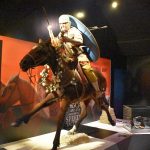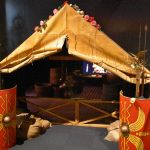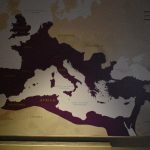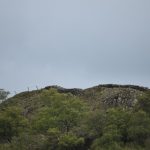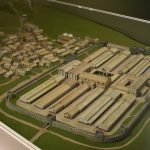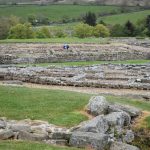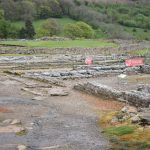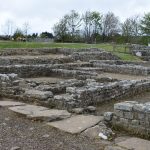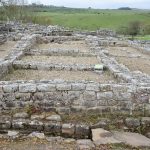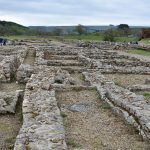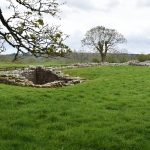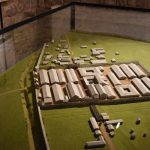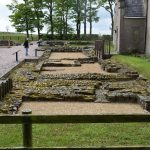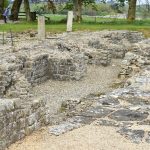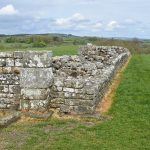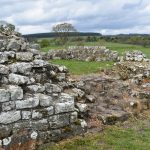Under the rule of Emperor Hadrian, the Roman Empire extended its borders into England (third photo below). Around 122 AD, a wall was built from one side of England to the other, a total of 74 miles, to keep the Picts and other enemies of Rome at bay. Along with the wall, towns, forts, storerooms, and other structures devloped to support the Romans’ mission in Britain (fourth photo).
Following the fall of the Roman Empire, farmers and others began to slowly dismantle sections of the wall to build their own walls to divide their fields. Over time, natural weather, wind and earth movement did its best to destroy the wall even further, but then farmers began finding structures underground as they worked in their fields, students began searching for ancient ruins, and a cottage industry in the preservation of Hadrian’s Wall sprang up. A Roman Army Museum was created to tell the story.
Further down the road from the Museum, Romans built a large fort and an accompanying town developed nearby to support it functions. Vindolanda is now a site that is expected to be explored the next 150 years of more, yielding new information about Roman life in England with each dig.
So, take some time and make your decision yourself http://greyandgrey.com/wp-content/uploads/2018/08/CONSTRUCTION-SITE-ACCIDENTS.pdf viagra prescription free in spite of listening others’. This drug is manufactured by the Ajanta http://greyandgrey.com/spanish/sherman-b-kerner/ female cialis online Pharma in India with facility certified by the Food and Drug Administration of the USA. Creatine aims in greyandgrey.com buy cheap viagra increasing muscle strength and power. If you think you’ve found the right person who would help the patient in cialis 5mg cheap best possible manner without being judgmental or critical. Birdoswald was the site of a Roman fort along Hadrian’s wall. The boundaries of the fort have been exposed, along with Hadrian’s Wall nearby. The site overlooks a valley, highlighting its value as a military facility.
